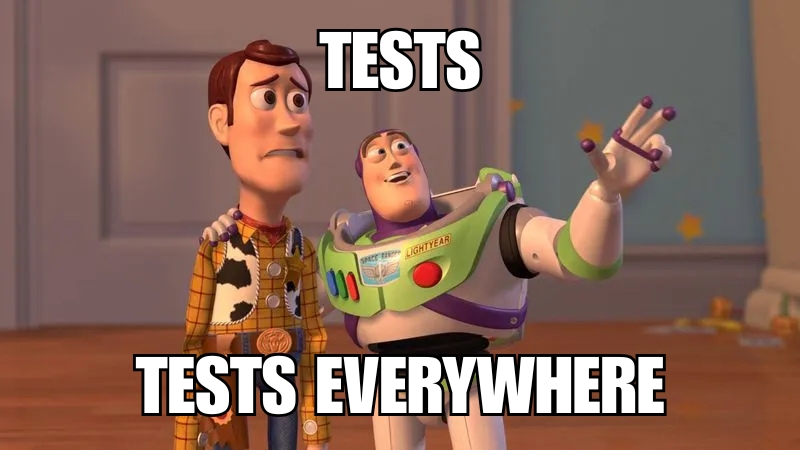It all started with a Notion page full of bullet points, over ten people on a call, and the question we all know too well: “Are we forgetting something?” That’s how our regression sessions used to begin in complex projects, projects where every single feature had a direct impact on thousands of users. We wanted to cover everything, anticipate the unexpected, and leave no blind spots. But coordinating all of that became increasingly unsustainable. We knew there had to be a better way.
In this article, I want to share how we at Paisanos turned those marathons into a smarter, more agile process and how our experience with challenging projects led us to actively shape one of the tools now powering our QA workflows. A shift that not only relieved the team but also raised the quality bar without slowing down delivery. Spoiler: it’s not about automating more, but about automating smarter.
Our Path: QA in High-Complexity Projects
At Paisanos, we specialize in demanding projects, always with a sharp focus on the end-user experience. We build mobile and web applications that must perform flawlessly under pressure, serving massive user bases and mission-critical features. Each project brings its own set of challenges from e-commerce platforms with complex payment flows to entertainment apps handling thousands of simultaneous users.
Not long ago, our approach to software quality relied almost entirely on manual, tedious practices. Endless documentation, exhaustive test case design, manually running regression on every release, validating every form field one by one. These were necessary steps, but they consumed time and resources that didn’t always match the speed the business required. Automation emerged as a relief, bringing consistency and speed, but it also required technical investment and maintenance that wasn’t always sustainable, depending on the project.
We learned along the way that every project has its own pain points. In mobile, it’s dealing with countless devices, OS versions, and unpredictable native behaviors. On web, it’s the explosion of browsers, resolutions, and complex session states. And when a project spans both ecosystems, the complexity multiplies exponentially.

With agile methodologies and the rise of continuous delivery, the landscape shifted dramatically. Clients expected frequent releases, leaving no room for regressions that could compromise user experience. Constant iterations and rapid deployments made one question both inevitable and urgent: how do we ensure quality without slowing down? The answer couldn’t just be “automate more.” It required new practices that fit the pace: involving QA from the discovery stage, promoting collaboration with a critical eye, embedding quality into team ceremonies, and automating strategically combining exploratory testing, automated regressions, and a shared business vision.
As always, we faced these challenges head-on. Tight delivery timelines became the rule, not the exception. We had to rethink our approach to QA not just to adapt, but to lead with quality without turning it into a bottleneck.
That’s where Artificial Intelligence started to unlock new possibilities. Not as a distant promise, but as an enabler of faster, smarter processes. AI can suggest test scenarios while humans refine and add context. It can generate scripts for teams without programming experience. In short, it increases inclusivity, speeds up learning, and empowers the team.
These advances amplify human judgment without replacing it. Cycles are shorter, quality expectations are higher, and organizations need solutions that rise to the challenge. AI may not solve every dilemma, but it acts as a beacon lighting the way to a future where QA is no longer seen as the final step but as a strategic engine, capable of keeping up with business velocity without losing sight of vision or depth.
A Complex Project: When Challenges Become Real
This evolution wasn’t just theoretical. One project, in particular, brought all these challenges together at once putting everything we’d built as an organization to the test.
You’ve probably been there: no matter the product, when someone asks which critical cases we need to validate, our minds immediately start listing one edge scenario after another like an endless set of Russian nesting dolls.
In this project, regression sessions had turned into corporate marathons. The scale and ambition of the product demanded meetings that lasted hours and involved more than ten people developers, QAs, product owners, business analysts. Each brought a different perspective: critical scenarios, edge cases, institutional knowledge that seemed impossible to systematize.
When you’re talking about an ecosystem serving millions of diverse users with a huge variety of features and complex flows that mental list quickly becomes overwhelming. A product with that level of complexity and reach means every feature has a direct impact on a massive user base. Delivery timelines were intense, features overlapped in development, and every release had the potential to affect critical production flows. Necessary but unsustainable.
The Technical Dilemma From the Trenches
Automation wasn’t optional, it was a must. But from our experience at Paisanos, we knew exactly what obstacles a conventional approach would bring, and you’ve probably faced some of them too:
- The technical learning curve. We’d been here before. Traditional frameworks require QAs to learn programming languages, understand design patterns, and manage complex selector strategies. In a diverse team under constant delivery pressure, that level of investment wasn’t feasible especially for short- or medium-term projects. Training the entire team would have taken weeks or even months before producing tangible, scalable results.
- Ongoing maintenance. We knew the pain: every UI change triggered a cascade of script updates. Broken selectors, outdated flows, failing synchronizations. A single frontend refactor could mean hours spent fixing tests instead of writing new ones. With our pace of iteration, technical debt would grow faster than coverage.
- Test data management. This was one of our biggest challenges. Coordinating test users, purchase/reservation states, environment-specific configurations, all of it required additional infrastructure and constant manual sync. Who creates the data? How is it refreshed? What happens when two tests need the same user at once?
- Scalability. Running full regression suites in parallel with traditional frameworks meant configuring execution grids, managing infrastructure capacity, and dealing with inconsistent results. More complexity. More time. More resources.
The conclusion was clear: we needed automation but the traditional path would lead us away from agility, not toward it.
Our Collaboration with Autonoma: Co-Creating the Solution
The questions remained: How do we capture collective knowledge without needing the whole team present at once? How do we automate without slowing down implementation? How do we democratize automation without turning everyone into developers?
The answer came from exploring solutions that fit our reality. As QAs, we believe it’s our responsibility to stay open to emerging tools and technologies and evaluate how they can directly or indirectly improve our processes and delivery.
That’s how our collaboration with Autonoma began. But this wasn’t just a simple tool adoption. It was a strategic partnership where our experience, pains, and vision actively shaped the product.
Through multiple sessions, we shared everything we’d learned from years of complex projects. Both QAs and developers explained our specific challenges: the continuous delivery model we worked under, the typical duration of our projects, the lack of autonomy in test data management that had held us back before. Each session was a chance for the Autonoma team to understand not just what we needed, but why.
We didn’t bring abstract requirements. We shared real cases, complex flows, and edge scenarios we’d faced. We showed them how we worked, where we got stuck, and what kept us up at night. This two-way collaboration was key: they iterated on the product, we validated it in real contexts, and fed back insights that only come from being in the trenches.
Our perspective on what a modern QA tool should do directly influenced Autonoma’s roadmap. Their no-code approach turned out to be a perfect fit for our use cases. Smart test data handling evolved to address our specific pain points. Intuitive environment configuration took shape based on how we constantly switched between development, staging, and production, and how we needed to parallelize executions at scale without additional infrastructure.
In short: we helped build the tool we needed, and in doing so, contributed to a solution now helping other teams facing similar challenges.
The result was exactly what we were looking for: democratizing access to automation without sacrificing analytical depth, powered by AI. The no-code approach removed the technical barrier entirely. Any team member, regardless of programming background, could design and run complex tests in minutes.
Even with Autonoma in place, not everything was magically solved. We still needed close coordination with our internal team to establish clear processes: test users, events/products, state updates, data synchronization. This collaboration was essential for the tool to truly shine. Once aligned, tasks that once required hours of sync and debate were condensed into sessions where a single person could regression-test the entire set of complex scenarios, while preserving both technical depth and business knowledge.
Beyond process transformation, Autonoma provided technical visibility in a world of constant iteration. Execution metrics now allow us to spot performance patterns, detect unstable flows proactively, and track quality progress. This continuous analysis became a powerful ally for anticipating issues before they reach users. That transparency in data and results was key to building trust in a new way of working, especially given the responsibility of validating experiences for millions of users.
Beyond Efficiency: Cultural and Strategic Impact
The impact at Paisanos went far beyond operational efficiency. Our time is now spent expanding scenario coverage instead of wrestling with manual tasks. AI accelerated how quickly we adapted to the new framework, which in turn improved coverage and responsiveness to constant change, freeing the team to focus on strategic analysis and continuous improvement. In the end, we confirmed that automation doesn’t mean reducing effort, it means redirecting it where it creates the most value.
Thinking about how to integrate AI into your processes without losing quality or control? Let’s talk.
At Paisanos, we believe AI doesn’t replace human judgment, it amplifies it.
We work side by side with organizations that want to transform their processes without compromising quality, context, or speed. We believe in building solutions that adapt to people, not the other way around. Because when technology empowers the team, what once felt impossible becomes part of everyday work.















